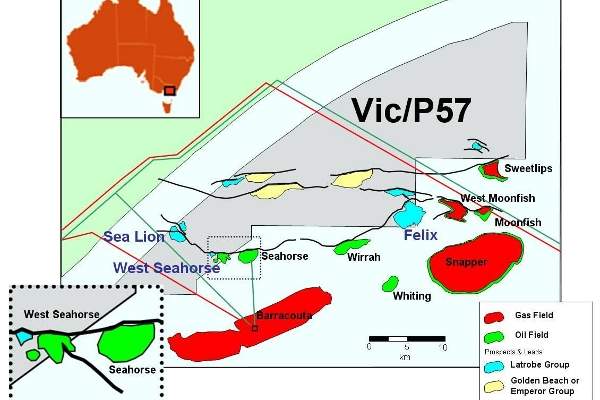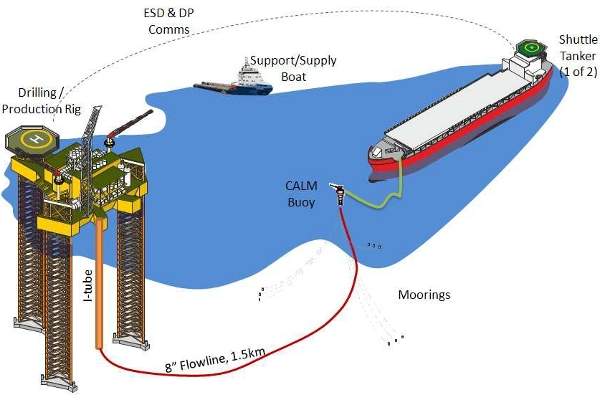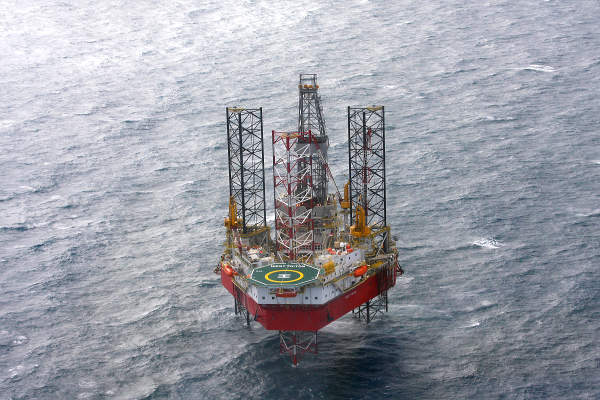
West Seahorse Oil Field is located in Block Vic/P57, about 14km offshore Gippsland Basin in Australia. Carnarvon Hibiscus is the operator of the field, holding a 50.1% interest in Vic/P57, while a 49.9% interest is held by 3D Oil. The water depth of the field is about 39m.
The farm-in agreement for the West Seahorse oilfield was announced in August 2012 and signed in January 2013 between the two operating companies. The deal was worth A$27m ($28m). Hibiscus received a 50.1% interest in the field, under the agreement.
The oilfield is expected to start production by early 2015 and have a life of four to five years. The Front End Engineering Design (FEED) for the field commenced in April 2013. It is being carried out by Worley Parsons. Drilling works for the oilfield are expected to commence in 2014.
The development cost of the field is expected to reach $80m. Initial oil production rates from the field are expected to be as high as 12,000 barrels of oil per day.
Discovery, geology and reserves of West Seahorse
West Seahorse was discovered in 1981 by Hudbay Oil. The reservoir is located at a water depth of 1,400m below sea level in thick, stacked fluvial channel sandstones. The second exploration well was drilled in 1982 and the third well was drilled by 3D Oil in April 2008. The third exploration well was drilled using the West Triton jack-up.
The oilfield is estimated to hold recoverable oil reserves of about 9.2 million barrels. The recoverable reserve estimate was previously 5.3 million barrels, but an independent review by Gaffney Cline and Associates (GCA) increased it to 9.2 million barrels of recoverable oil.
West Seahorse oilfield development details
The development location of the oilfield was announced in November 2010. The field development concept was finalised in April 2013 and the production licence application for the project was submitted in the same month.
Related project
Fletcher Finucane Oil Project, Carnarvon Basin, Australia
Fletcher Finucane oil project lies within block WA-191-P in the Carnarvon Basin, offshore of Western Australia.
The approval of the concept and the final investment decision (FID) for the project are expected by the end of 2013, after which drilling works will commence.
The development of the field will involve drilling two production wells using a jack-up drilling rig. The drilling rig will later be replaced by a leased mobile offshore production unit (MOPU) consisting of a hydraulic snubbing unit.
The MOPU will be a modified jack-up fixed to the seabed. It will be equipped with processing facilities capable of removing flare gas and water, stabilising crude oil and exporting it.
Related project
Shell’s Prelude FLNG Project, Browse Basin, Australia
The Prelude floating liquefied natural gas project will mark the deployment of Shell’s FLNG technology for the first time.
The produced water from the field will be treated and transferred back into the sea. The stabilised crude oil from the field will be transferred through a 4in flexible flowline measuring 1.5km in length to a catenary anchor leg moored (CALM) buoy.
It will be transported further through a flexible hose to a floating storage offloading (FSO) vessel from where it can either be transferred to another vessel or be transported to a neighbouring refinery.
The oilfield is located about 38km east of the onshore Esso Longford Gas Plant and 11km from Esso’s offshore Barracouta platform.
Details of the Vic/P57 offshore permit area
The Vic/P57 permit was owned solely by 3D Oil since 2004 until the formation of the joint venture (JV) with Hibiscus. The block covers an area of approximately 483km². It is located in the Gippsland Basin, which accounts for approximately 57% of Australia’s overall production of petroleum liquids.
The JV also plans to develop the Sea Lion prospect located 7km north-west of West Seahorse. The prospect has the potential to add value to the West Seahorse development as a tie-in. Sea Lion is estimated to have reserves of about 20 million barrels of oil.











